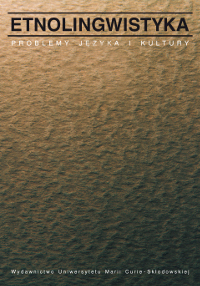Фольклорный концепт святости: свои или чужие?
The conception of sainthood in folklore: Us or them?
Author(s): Andrey Borisovič MorozSubject(s): Anthropology, Language and Literature Studies, Customs / Folklore, Applied Linguistics, Cognitive linguistics, Cultural Anthropology / Ethnology, Culture and social structure , Philology
Published by: Wydawnictwo Naukowe Uniwersytetu Marii Curie-Sklodowskiej
Keywords: us vs. them; sainthood; Russian folklore; point of view
Summary/Abstract: Who are saints in the traditional Russian folklore, do they belong to us or to them? With the assumption that the boundaries between what is familiar and what is foreign are unstable and depend not only on the object but also on the subjective point of view, the author answers the question with an analysis of the material collected in the Arkhangelsk region (now in the archives of the Russian National Humanist University). He assumes that the category of “us” may be understood in two ways: relatively (somebody who belongs to the same group as we do; the relevant pronouns: my, our) and possessively (someone or something that belongs to the subject). The author further investigates how saints and sainthood relate to the “us --- them” opposition. There is no unambiguous answer. Saints are closely connected to categories of afterlife, such as God, mythological and demonic figures, the dead; they exhibit superhumam powers. At the same time, they are treated as humans, belonging to specific communities (cf. russkiy bog ‘Russian God’). Thus, saints occupy a middle position between the world of humans and the world beyond; more exactly, they are representatives of both, which in folk understanding makes relations with them valuable in a peculiar way.
Journal: Etnolingwistyka. Problemy Języka I Kultury
- Issue Year: 19/2007
- Issue No: 19
- Page Range: 143-152
- Page Count: 10
- Language: Russian

